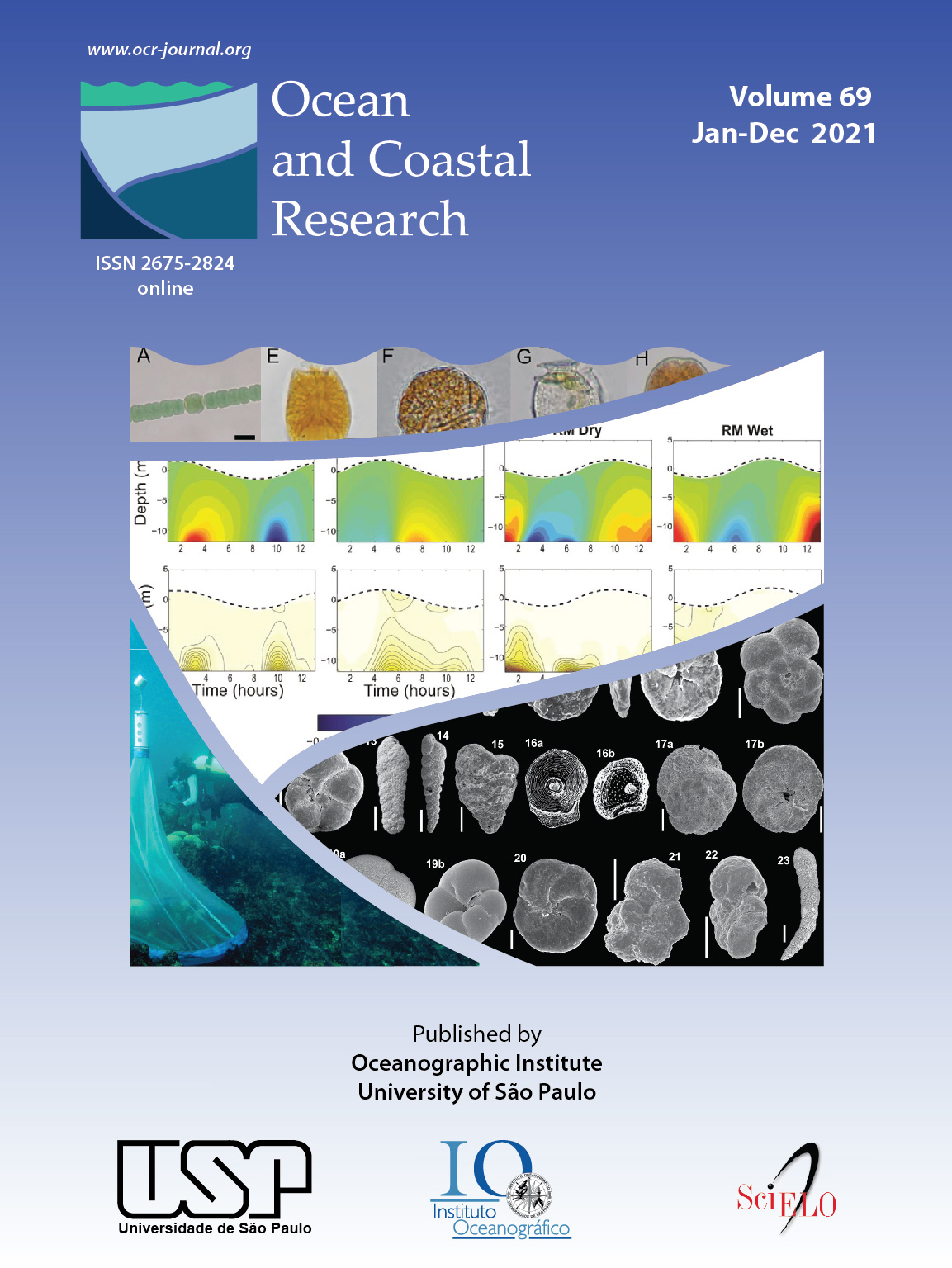Insights on the non-linear solution of Munk's ocean circulation theory from a rotating tank experiment
DOI:
https://doi.org/10.1590/2675-2824069.20-011pspKeywords:
Teaching GFD, Rotating tank, Subtropical ocean circulation, Numerical modeling, Munk's ocean modelAbstract
At age 101, Walter Munk passed away in 2019. His groundbreaking discoveries will still guide and amaze oceanography
students for years to come. Here, we perceive patterns in rotating tank with Munk’s circulation theory aided by a
Lagrangian particles tracking algorithm and numerical modeling. From information captured by video, we track the
trajectories of drifters, and then objectively mapped the streamfunction to obtain the mean circulation pattern. We were
able to reproduce the wind-forced anticyclonic and asymmetric gyre, including the western boundary intensification and
its retroflection. The latter phenomenon was predicted by the non-linear version of Munk’s model and observed in real
subtropical gyres as small recirculation regions. We have configured two numerical model simulations mimicking the
physical experiment, with linear and non-linear terms. The comparison between the numerical and physical experiments
confirmed the effect of non-linear distortion of the gyre. Geophysical fluid dynamics is often hard to visualize, and counterintuitive in a rotating system. We present this set of experiments as a tool for oceanography teaching. Besides studying
general ocean circulation theories and observations through practical examples, this experiment provides an opportunity
to develop basic image processing and geophysical modelling skills.
References
LARGE, W.G. & POND, S. 1981. Open Ocean Momentum Flux Measurements in Moderate to Strong Winds. Journal of Physical
Oceanography, 11(3), 324–336.


